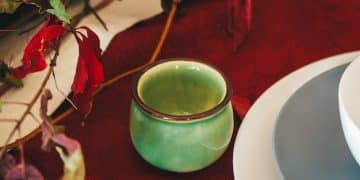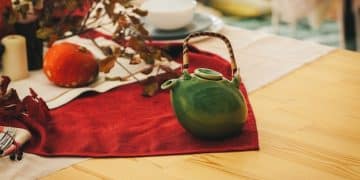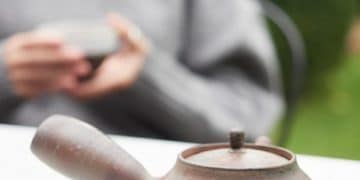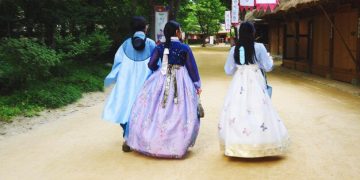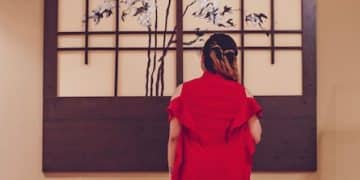Korean tea ceremony traditions: Exploring the art
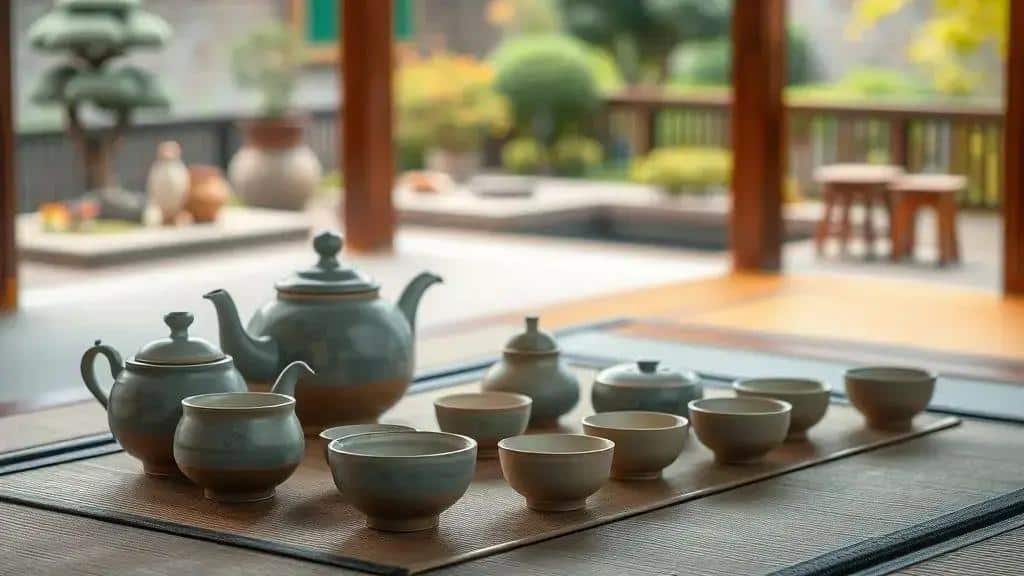
Korean tea ceremony traditions focus on mindfulness and cultural heritage, emphasizing the shared experience of enjoying tea, the essential elements involved, and the significance of fostering community connections.
Korean tea ceremony traditions offer a unique glimpse into Korea’s rich culture and sense of harmony. Have you ever wondered how these rituals foster community and mindfulness? Let’s dive into this captivating tradition.
Understanding the history of Korean tea ceremonies
The history of Korean tea ceremonies is rich and deeply rooted in tradition. These ceremonies reflect the culture and aesthetics of Korea, emphasizing peace and mindfulness. Understanding their origins can enhance your appreciation of the ritual.
Early Beginnings
Tea was introduced to Korea during the Goryeo Dynasty (918-1392) from China. Initially, it was consumed for medicinal purposes rather than as a social ritual. Over time, the cultural significance of tea blossomed, leading to its integration into traditional customs.
Evolution of Ceremonies
During the Joseon Dynasty (1392-1910), the tea ceremony evolved substantially. It became a formal event, marked by specific etiquette and a focus on harmony. The practices developed during this time are still evident in modern ceremonies.
- The emphasis on respect and hospitality is central to the experience.
- Different types of tea are used, each with its significance.
- Traditional tea sets are carefully chosen to enhance the aesthetic appeal.
- Each movement in the ceremony reflects the importance of mindfulness.
The influence of Buddhism also played a significant role in shaping these ceremonies. As Buddhism spread in Korea, so did the appreciation for tea. It became a tool for meditation, helping individuals connect with their inner peace. The simple act of brewing and serving tea embodies the principles of mindfulness, making every ceremony a moment of tranquility.
Modern interpretations of Korean tea ceremonies continue to honor these traditions while adapting to contemporary tastes. Many people today seek these peaceful moments in the hustle and bustle of daily life. Hosting a tea ceremony at home can be a beautiful way to share this timeless tradition with friends and family.
In understanding the history of Korean tea ceremonies, one can discover a profound connection to cultural identity and values. Each sip is a reminder of a heritage that celebrates simplicity and respect for nature.
Essential elements of the tea ceremony
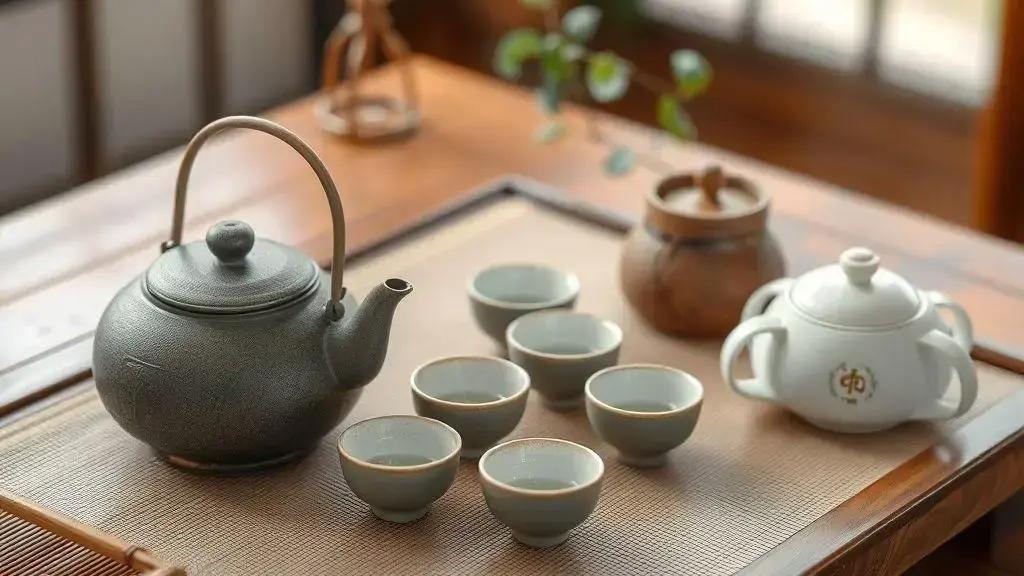
When we think about the essential elements of the tea ceremony, several aspects come to mind. Each component plays a significant role in creating an atmosphere of tranquility and respect.
Tea Selection
The first essential element is the selection of tea. Different types of tea are used, each bringing its unique flavor and character. Common choices include:
- Green tea – prized for its fresh and grassy taste.
- Black tea – rich and robust, perfect for quiet reflections.
- Herbal tea – used for relaxation, with various health benefits.
Choosing the right tea enhances the ceremony and sets the tone for the experience.
Utensils and Equipment
The utensils used in a Korean tea ceremony also hold great significance. The most important tools include:
- Teapot: Typically made from clay or ceramic, it allows the tea to breathe, improving the flavor.
- Cups: Small, often handcrafted, so that the tea maintains its warmth.
- Tea caddy: Holds the tea leaves, keeping them fresh and aromatic.
Each piece is not just functional but also contributes to the beauty of the gathering.
Beyond the physical items, the atmosphere plays a key role as well. A serene environment, often created by soft lighting and natural decorations, invites guests to relax. Traditional rooms where these ceremonies take place are often adorned with elements from nature, emphasizing the harmony sought in each ritual. Attendees are encouraged to engage in quiet reflection, further enhancing the experience.
Lastly, the actions of the host are vital. Every movement, from pouring the tea to presenting the cups, is intentional. This mindfulness creates a connection with the guests, making them feel appreciated and respected. It’s a beautiful cycle of giving and receiving that embodies the spirit of the ceremony.
The essential elements of the tea ceremony are about creating a moment where time slows down, allowing for connections, tranquility, and a deep appreciation of the present.
Step-by-step guide to conducting your own ceremony
Conducting your own Korean tea ceremony can be a rewarding experience. Here’s a simple step-by-step guide to help you create this moment of tranquility.
Preparation
Start by gathering all the essential tools. You will need a teapot, tea cups, a tea caddy, and fresh tea leaves. Make sure your space is quiet and inviting. Soft lighting and natural decorations can set the mood.
Choosing the Right Tea
Select your preferred type of tea. Popular choices include:
- Green tea: Refreshing and light.
- Black tea: Rich and full-bodied.
- Herbal tea: Relaxing and aromatic.
Each type of tea offers a different experience, so choose the one that resonates with you.
Boiling Water
Next, boil fresh water. The temperature will depend on the type of tea you choose. For example, green tea usually requires lower temperatures than black tea. Aim for a gentle boil to preserve the flavors.
Brewing the Tea
Once the water is ready, add the loose tea leaves to the teapot. Pour the hot water over them. Let it steep for the recommended time based on the tea type. This allows the flavors to develop fully.
Serving the Tea
After steeping, it’s time to serve. Pour the tea into the cups, filling each cup equally. Present them with both hands to show respect and care.
Enjoying the Moment
As you enjoy your tea, take a moment for reflection. Appreciate the flavors and aromas. Engage in quiet conversation or simply enjoy the silence of the ceremony.
With each sip, you will find a deeper connection to the traditions of the Korean tea ceremony. This practice not only brings relaxation but also fosters a sense of community with those you share it with.
Cultural significance and modern adaptations
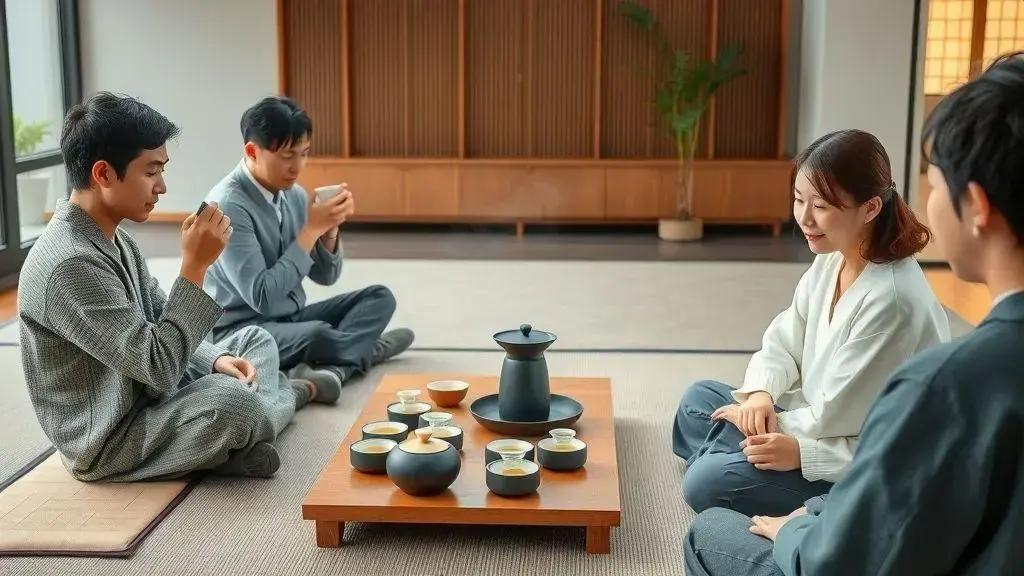
The cultural significance of the Korean tea ceremony goes beyond simply drinking tea. It represents a deep-rooted tradition that values harmony, respect, and mindfulness. For many, participating in a tea ceremony is a way to connect with their heritage and community.
Historical Roots
The origins of the tea ceremony in Korea date back to ancient times when it was linked to royal courts and Buddhist practices. It was a symbol of hospitality and respect. Over the centuries, the ceremony evolved, but the core principles remain unchanged. Today, it serves as a reminder of cultural identity and the importance of mindfulness.
Modern Adaptations
In recent years, there has been a revival of interest in traditional practices, leading to modern adaptations of the tea ceremony:
- Fusion styles: Many people now blend traditional elements with contemporary tea types and settings.
- Workshops: Classes are offered to teach newcomers about the art of the tea ceremony, making it more accessible.
- Social gatherings: Friends and family often host tea parties that emphasize relaxation and connection.
These adaptations not only preserve the essence of the ceremony but also make it relevant to younger generations. Creating a welcoming environment and incorporating personal touches allows participants to engage more fully.
Even in busy urban areas, the spirit of the tea ceremony can be found in cafes or community centers. People seek out these spaces for a moment of peace amidst their hectic lives. The act of sharing tea fosters conversation and connection, reflecting the very foundation of the ceremony.
As more individuals discover the benefits of mindfulness, the Korean tea ceremony continues to evolve. It remains a space where tradition and modernity coexist, allowing everyone to partake in its beauty.
Korean tea ceremony is a beautiful blend of tradition and modernity. It offers a unique way to connect with culture, mindfulness, and community. By understanding its significance and adapting it to contemporary life, we can enjoy its many benefits. Whether you participate in a ceremony at home or join a modern gathering, the essence remains the same: a moment of peace and connection. Celebrate this rich heritage as it continues to unfold and touch lives everywhere.
FAQ – Frequently Asked Questions about Korean Tea Ceremony Traditions
What is the Korean tea ceremony?
The Korean tea ceremony is a cultural ritual that emphasizes mindfulness, connection, and respect, where participants share and enjoy tea in a serene environment.
What are the essential elements of the tea ceremony?
Essential elements include the type of tea, utensils like teapots and cups, and the atmosphere, all contributing to the overall experience.
How can I adapt the tea ceremony for modern settings?
You can adapt the tea ceremony by blending traditional practices with contemporary styles, hosting informal gatherings, or offering workshops to educate others.
What is the significance of a Korean tea ceremony in today’s society?
The ceremony serves as a reminder of cultural heritage and provides a space for relaxation and connection in our busy lives.
